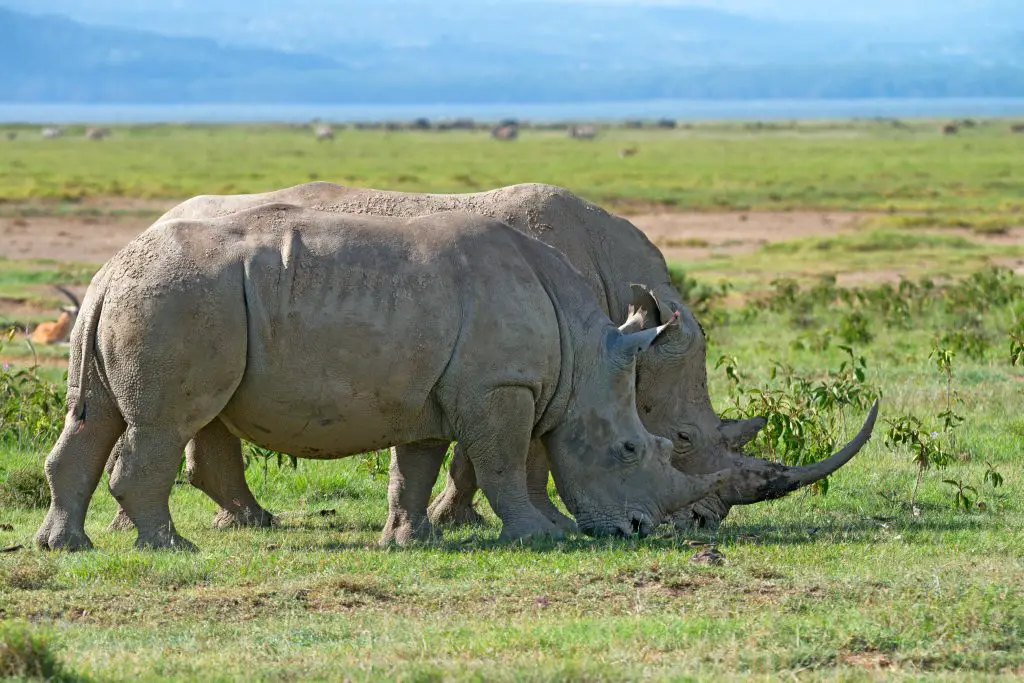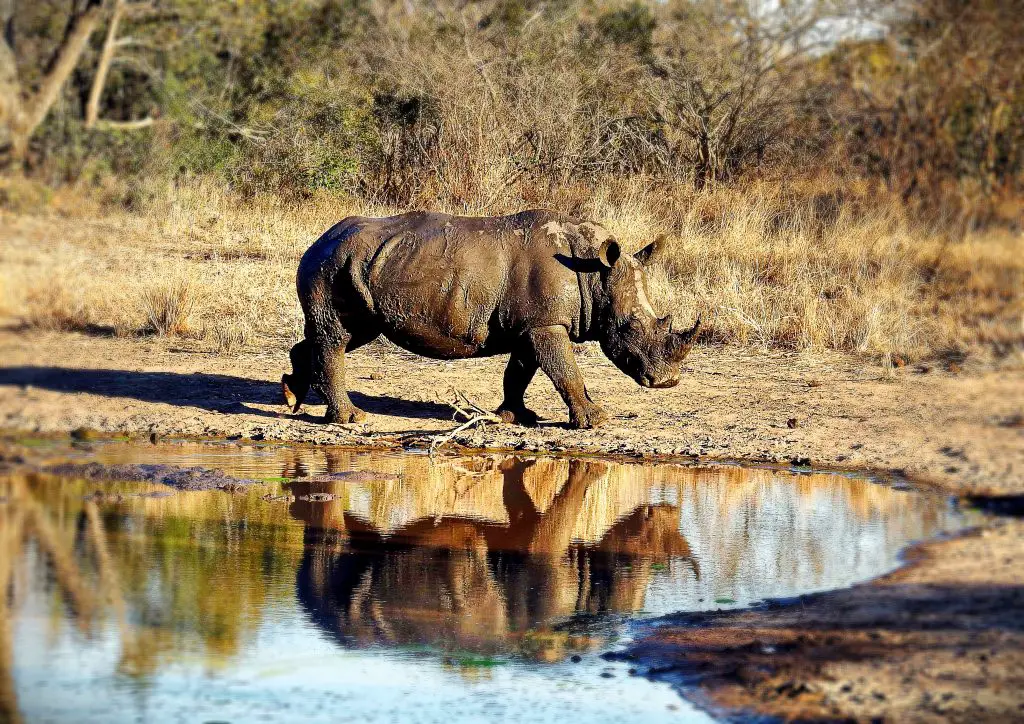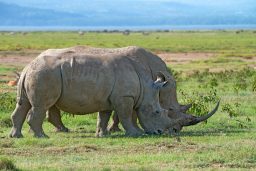Adult Rhinos are too big and strong to have natural predators. However, if sick, injured or very young – a hungry predator will certainly consider a rhino.

Why Do Rhinos Have Predators?
You would think that a rhino is so big and thick-skinned that no one would try to attack it – and you would be right. There are hardly any animals at all who would actively prey on healthy adult rhinos.
Seeing as the larger rhinos can be 175cm (6ft) tall; weigh around 2 tonnes (4400lbs); have 5cm (2 inches) thick skin, and wear a 60cm (2ft) long pointed horn on the end of its nose – you can see why.
However, if the rhino is young, small, injured or very old (which can be 50+ years for most rhinos) then they may be seen as an easier target. Not quite as likely to put up such a good fight – or even able to do so. Also, if the predators are working in a pack, this can often be seen as an opportunistic meal. Large predators don’t actively hunt rhinos though – but they will certainly eat one if they get the chance.
Very Young:
New-born and very young rhinos are only around 40kg (80lbs) which is less than a German Shepherd dog – no match at all for a predator like a lion or a whole pack of wild dogs. They also don’t have their full thick skin, large horns, or any reason to be aggressive. They really need to stay close to mom.
Young & Alone
As the young rhino grows, it will get more confident and move away from the herd to feed. However, as it is still small and vulnerable, big cats can still overpower them if mom doesn’t come back. Also in Africa, a small to medium-sized rhino is an easy meal for a giant Nile Crocodile. These huge beasts also take down full-size giraffes and big cats – so a teeny rhino wouldn’t be a problem.
Small & Outcast
Rhinos part ways with their moms at around 2-3 years of age in most species, when the new calf is born. And in those species that are mainly solitary, this means they are alone. Sometimes being alone can be overwhelming – especially in the early days when the mom has to try to chase off the older calf. It can be a confusing time. During this time it could be quite easy for the young rhino to become lost, make a wrong decision or travel through unsafe territory.
Injured
If a rhino has been wounded in a fight or by mother nature, it will have an open wound. Perfect for a predator. A rhino’s tough skin is always a challenge for most predators, so knowing that there is already a tear in the hide will be an advantage. If the injury has also made the individual rhino weaker – then they will be really unlucky to bump into a pride of lions before it heals.
Sick
Whether they have lost their teeth, become diseased, overwhelmed with parasites, or blinded, this will show in their behavior and a predator will spot this. Slower movement, weight loss, weaker reactions will all be noticed by keen-eyed predators – because these are things that they harangue animals for. By coming close to any animals, they spook them and can spot them when there is a weakness. And they will always take advantage of that.
Too Old
Once a rhino gets to a certain age, it will inevitably become too tired to run and fight, or too weak to care. If they are lucky, they will pass without obvious symptoms or having been seen by anyone. But if they are unlucky enough to be spotted by a big cat or accidently wade too far into a river – that could be their very last day.

Which Rhinos Are Endangered Due to Predators?
There are several species of rhinos in the world, but when it comes to identifying which rhinos are endangered, we must consider the threats they face from predators. Among the five remaining rhino species, the Sumatran and Javan rhinos are critically endangered, with both facing constant pressure from illegal hunting and habitat loss.
Who Are The Main Predators Of Rhinos?
Across their range – rhinos have a large number of possible predators. These predators don’t actively hunt rhinos, but they will eat them if the opportunity arises. They can hunt down rhinos in all sorts of habitats and the size of the rhino isn’t an issue – although smaller/younger rhinos are most often taken.
There is a wider range of possible predators in Africa (White & Black rhinos), but no less scary than those found in Asia and South-East Asia:
Big Cats – In Africa these are usually lions and leopards, but in Asia and South-East Asia they will be tigers and leopards.
Hunting Dogs – Only in Africa, these pack hunters usually hound down their prey.
Hyenas – Only in Africa, these aggressive animals will often take bites out of injured animals rather than kill them outright first.
Crocodiles – Adult male Nile and Saltwater crocodiles are the only ones strong enough to try to take down a rhino.










